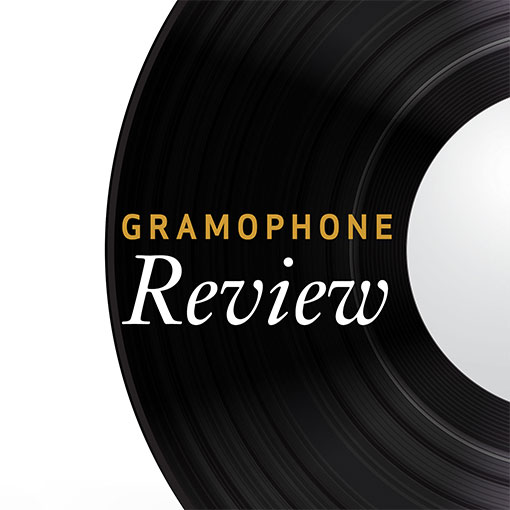Williams Treesong; Violin Concerto; (3) Pieces from Schindler's List
New concert hall material from Williams but how does it fare against his cinema output?
View record and artist detailsRecord and Artist Details
Composer or Director: John (Towner) Williams
Genre:
Orchestral
Label: DG
Magazine Review Date: 12/2001
Media Format: CD or Download
Media Runtime: 66
Mastering:
Stereo
DDD
Catalogue Number: 471 326-2GH

Tracks:
| Composition | Artist Credit |
|---|---|
| Treesong |
John (Towner) Williams, Composer
Boston Symphony Orchestra Gil Shaham, Violin John (Towner) Williams, Composer John Towner Williams, Conductor |
| Concerto for Violin and Orchestra |
John (Towner) Williams, Composer
Boston Symphony Orchestra Gil Shaham, Violin John (Towner) Williams, Composer John Towner Williams, Conductor |
| Schindler's List, Movement: Theme from Schindler's List |
John (Towner) Williams, Composer
Boston Symphony Orchestra Gil Shaham, Violin John (Towner) Williams, Composer John Towner Williams, Conductor |
| Schindler's List, Movement: Jewish Town (Krakow Ghetto Winter '41) |
John (Towner) Williams, Composer
Boston Symphony Orchestra Gil Shaham, Violin John (Towner) Williams, Composer John Towner Williams, Conductor |
| Schindler's List, Movement: Remembrances |
John (Towner) Williams, Composer
Boston Symphony Orchestra Gil Shaham, Violin John (Towner) Williams, Composer John Towner Williams, Conductor |
Author: kYlzrO1BaC7A
The world’s most widely heard composer? Probably. But do we really know John Williams’ music from his film scores – that is‚ the music he chooses to or needs to write? Yes and no. We know all about his lyric facility‚ his aspirational themes; we know all about his orchestral skills‚ his ability to hear precisely the colours that will make for this or that mood‚ and to immediate effect; we know all about his extraordinary discipline. But cut loose from the strictures of ‘underscoring’‚ from music very much made to measure‚ where does John Williams take us then?
Well‚ the answer is not so much ‘where’ but ‘how’. Because in the concert hall he’s free to journey‚ to rhapsodise‚ to ‘ramble’‚ as Percy Grainger would have put it. The two big‚ cinematically unrelated‚ works here are essentially violin concertos. The later of the two (written just over a year ago) is TreeSong. The tree in question resides in the Boston Public Garden and is the offspring of the oldest metasequoia in North America. It is of Chinese origin‚ a kind of ‘living fossil’ whose age and wisdom‚ says Williams‚ was the source of inspiration for the piece. So‚ a meditation. Against a cool‚ shimmering‚ sylvan backdrop of fashionable tuned percussion – marimba‚ plus piano‚ harp and celeste – the solo violin muses. But if you’re thinking crouching tigers‚ hidden dragons‚ don’t. Western traditions prevail. Contrasts come in the traditional way‚ with the opposition of the lyric and the impulsive – action and repose‚ singing and dancing. The dancing central panel of TreeSong climaxes in that bracing‚ minimalisticsounding music so associated now with open space. It’s the music of vaulting ambition‚ achievement‚ the homerun. But without the moving pictures. When ‘The Tree Sings’ in the final panel it does so at length. This is the most beautiful and welldirected music in the piece – meaning that in Williams’ case it is sometimes better to arrive than to journey.
There is a tendency here towards a little too much of what I would call ‘musical grouting’. It’s almost as if freedom for Williams is too much of a good thing. The music begins to lose identity and focus. One starts to crave the quick fixes of his movie work. I particularly felt this with the earlier piece – the Violin Concerto of 1974 – where a few too many yards of toccatalike workingout (Prokofiev and Bartók without their imperative) prove less purposeful‚ less interesting than Williams might think.
Gil Shaham gives everything his best shot – his playing throughout is characteristically bighearted and determined – but it’s revealing then to compare the three exquisitely tailored concert pieces drawn from Williams’ score for Steven Spielberg’s Schindler’s List. You know exactly where you are. And you do so because everything is anchored very specifically in events and characters and emotions enshrined in the film. But even without the extramusical associations‚ their concision is everything the bigger pieces are not. How beautifully Williams refers back to his haunting main theme in the final bars of the last piece: only a fragment‚ mind‚ halfremembered. A quick fade to black. But less is more. And deep down I’m sure Williams knows it.
Discover the world's largest classical music catalogue with Presto Music.

Gramophone Digital Club
- Digital Edition
- Digital Archive
- Reviews Database
- Full website access
From £8.75 / month
Subscribe
Gramophone Full Club
- Print Edition
- Digital Edition
- Digital Archive
- Reviews Database
- Full website access
From £11.00 / month
Subscribe
If you are a library, university or other organisation that would be interested in an institutional subscription to Gramophone please click here for further information.





